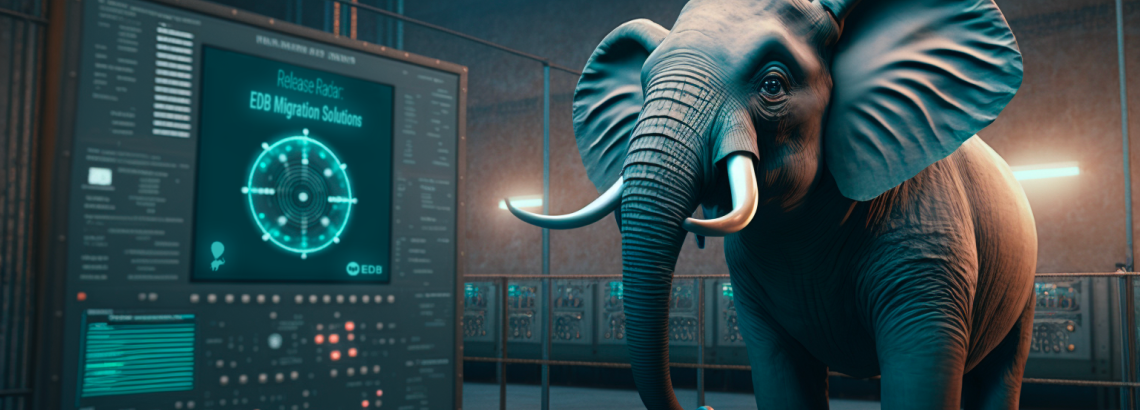
EDB migration solutions help organizations move applications from Oracle to Postgres. The amount of effort involved in migrating to Postgres can vary based on the complexity, size, and compatibility of the application. EDB enables a much smoother migration with tools, services and compatibility features and functions.
Unlike many legacy database providers, EDB gives customers choices for how they want to deploy and manage their database investments. One of the ways we do this is by offering the choice of self-managed Postgres or fully managed Postgres in the cloud through EDB BigAnimal. Whether your Postgres journey includes a move to the cloud, to Kubernetes or any other implementation, EDB migration solutions can reduce risk and shorten the time to migrate.
Over the last few months we’ve significantly enhanced our solutions to make these migrations much more efficient. We will look at some of the more significant enhancements in this article.
EDB Migration Portal 4.3 simplifies Oracle to Postgres migration assessments
EDB Migration Portal is a web-based service for migrating Oracle database schemas to the EDB Postgres Advanced Server (EPAS) platform. It analyzes and assesses Oracle database schemas and produces DDL statements that are compatible with EPAS. For organizations that are even considering a move from Oracle, this is a no-cost, no-risk way to assess the level of effort and resourcing required.
EDB Migration Portal 4.3 was released December 8, 2022. It includes several enhancements that make planning for a move to Postgres even easier. The Migration Portal has been enhanced to support the assessment and migration of users, roles, profiles and grants from the source Oracle database. This helps your team transition to EDB Postgres while preserving much of their administration infrastructure.
We’ve made significant enhancements to simplify the user experience for migrating schemas. We’ve also reduced the number of steps required to migrate schemas and eliminated redundant options. All of these changes make it easier than before to assess and migrate schemas and make the tool much more user friendly.
In earlier versions of Migration Portal, when reporting the complexity of a migration project, the tool assumed users were migrating to EPAS 14. For users planning to migrate to an earlier version of EPAS, the complexity score may not have captured some incompatibilities of earlier versions. Because we are always adding new Oracle compatibility features, each new release of EPAS automates more of the schema translation and lowers the complexity of migration. Migration Portal 4.3 reports the complexity specific to the target version of EPAS selected by the user for a more accurate assessment.
There are also several other enhancements, security enhancements and bug fixes in this release. For a deeper dive of what’s new, read the EDB Migration Portal 4.3 Release Notes.
Migration Portal version 4.4.0
Migration Portal 4.4 was released February 14, 2023 alongside the release of EPAS 15. In support of EPAS 15, Migration Portal users can now choose EPAS 15 as the target database for migrations from Oracle. As we mentioned in the 4.3 release section earlier, Migration Portal can assess and help migrate schemas for a specific version of EPAS, which now includes EPAS 15.
The Migration Portal now provides the option to preserve the Oracle casing (default for Oracle is uppercase, whereas the default for Postgres is lowercase) of object names when assessing the objects and migrating them to the target EDB Postgres Advanced Server database. Customers who have applications with quoted uppercase references to database object names will not need to change their application database queries and procedural object calls to reference objects differently.
More Migration Tools
Migration Toolkit version 55.5.0 now enables users to migrate data using the default COPY option when the column order in the target tables are different than those in the source tables. Previously the only way to migrate data when column ordering was not identical was to copy the data using SQL insert statements. The default COPY option is much more efficient and will save time when there is a column ordering mismatch.
Replication Server version 7.5.0 enables users to perform snapshot migration of data from materialized views to tables. Replication server previously only enabled replicating data exposed through normal views in snapshot replication based publications, but 7.5 adds materialized views as well. This enhances the flexibility and ease of migrating data to Postgres.
With the February 14, 2023 release, all migration solutions now support EPAS 15. Support for PostgreSQL 15 was added to Migration Toolkit 55.4.0 and Replication Server 7.4.0 when they were released on November 29, 2022.
Get Started
If you’re ready to migrate today, contact us. To learn more about migrating from Oracle to Postgres, Migration Portal is free and easy to get started. Sign up and start assessing any Oracle database schema today. In a few minutes you can generate a report that assesses the difficulty of migrating to EPAS. The tool will also create DDLs that can be easily loaded into EPAS if you decide to move forward, but there is no commitment on your end. Find out how easy it will be to migrate by signing up today.
